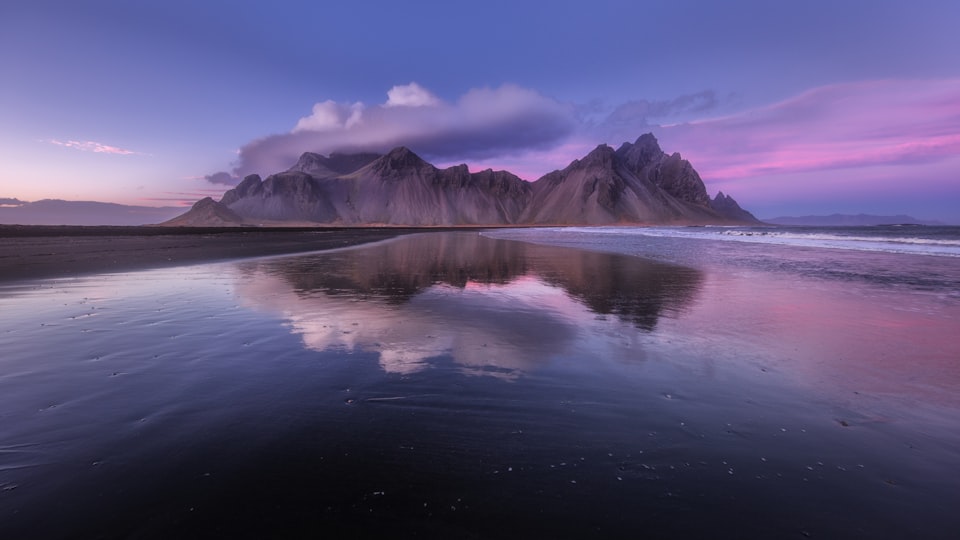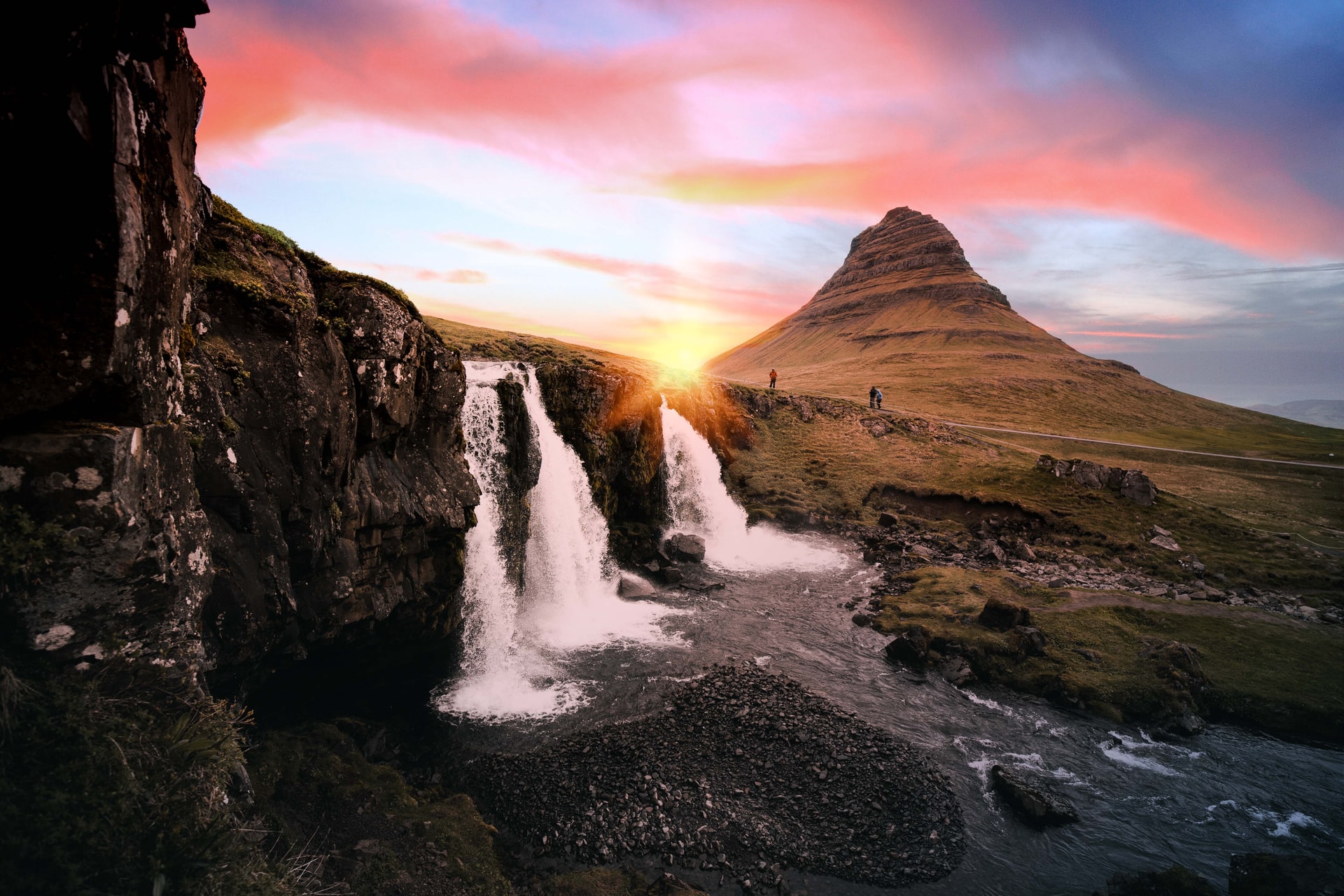Every Icelander has a favorite mountain, and some are more well-known than others. Hvannadalshnjkur, Iceland’s tallest peak, is located in the southeast corner of the nation, on top of the Vatnajökull glacier.
After its volcanic eruption in 2010, Eyjafjallajökull, in the south of Iceland, is perhaps the most world-renowned peak in Iceland — yet every Icelander knows names like Herubrei (a mountain in the north-east of Iceland).
Many appear in folk stories or poetry, and many people have a unique relationship with their local mountain. However, everyone will argue on which mountain is the most beautiful in the country.

Landmannalaugar Mountains
Landmannalaugar is a region in southern Iceland that consists of several distinct mountains rather than a single peak. It is a famous tourist attraction in Iceland’s Highlands, and it’s also one of the most photographed. Mountains with various shades of red, yellow, orange, white, black, blue, green, and purple may be seen in this mountainous terrain.
Because these mountains are located in the Icelandic highlands, you will need to take a bus or drive a 4×4 vehicle to reach there. Its varied and complicated geology history attracts geologists from all over the world, and it offers a diverse range of hiking routes to those seeking escapism and nature.

Kirkjufell Mountain
Kirkjufell is perhaps Iceland’s most postcard-like peak, along with Vestrahorn in East Iceland. Mount Kirkjufell is unique among volcanoes in that it alternates layers of lava and sedimentary rocks rich in fossils. The mountain’s current shape is a result of the pressure imposed by the two glaciers in the center of which it was discovered as an exposed glacial island known as a nunatak. The mountain and the Kirkjufellsfoss waterfalls provide a spectacular backdrop.
This picture-perfect cone-shaped peak can be located on the Snfellsnes peninsula, near to Snfellsjökull, and is the excellent backdrop for your perfect shot. It is located on the northern side of the peninsula, along Highway 54, just outside of the small town of Grundarfjörur. It’s about a 2.5-hour drive from Reykjavik. When are you going to arrive?

Snaefellsjokull Glacier
Snfellsjökull is a volcanic glacier with a distinctive peak that resembles two devil horns; no wonder it was considered to be the entrance to hell. In his novel Journey to the Center of the Earth, Jules Verne portrayed it as the entrance to the Earth’s core.
Snfellsjökull is located on the west coast of Iceland, at the point of the Snfellsnes peninsula. The peak may be seen from Reykjavik on a clear day. You may also take this Snfellsjökull glacier trekking trip if you want to view it from the summit. There are a variety of different Snfellsjökull excursions to select from if hiking isn’t your style.

Hvitserkur Rock
Iceland’s coolest looking rock. A 15-meter-tall rock in the water off the coast of Iceland’s northwest. A hidden gem amid Iceland’s natural beauty that should not be overlooked. To get there, drive north on ring road number 1 for 3 hours and 40 minutes from Reykjavik.
After passing through Hvammstangi and a little distance before reaching Blönduós, turn left into road number 716 and then right onto road 711, which will take you to sea level, where this rock awaits you.

Lómagnúpur, South Iceland
Lomagnupur is a beautiful 690-meter-high rock wall on the Southern Coast, not far east of Kirkjubaejarklaustur, with a top rising at 765 meters. In all seasons, lava intermixes with vast layers of sediments going back to the early Ice Age, creating a dizzying beauty. Back when the water level was considerably greater than it is now, Lomagnupur was a steep promontory towering tall against the furious North Atlantic Sea. Lomagnpur has been a frequent topic in Icelandic sagas due to its beauty and character.

Hekla, South Iceland
Hekla, with its 1491-meter-high peak and 5-kilometer-long crest, proudly overlooks Iceland’s wide Southern Lowlands and is one of the country’s most active volcanoes, waiting for its next eruption. Although the most recent eruptions were minor, there was a period when the explosions in Hekla were so terrifying that many mistook it for the entrance to Hell! Over 20 eruptions have occurred in recorded history, with the most recent eruptions being in 1947-48, 1970, 1980-81, 1991, and 2000. Hekla might explode at any moment now!




0 Comment